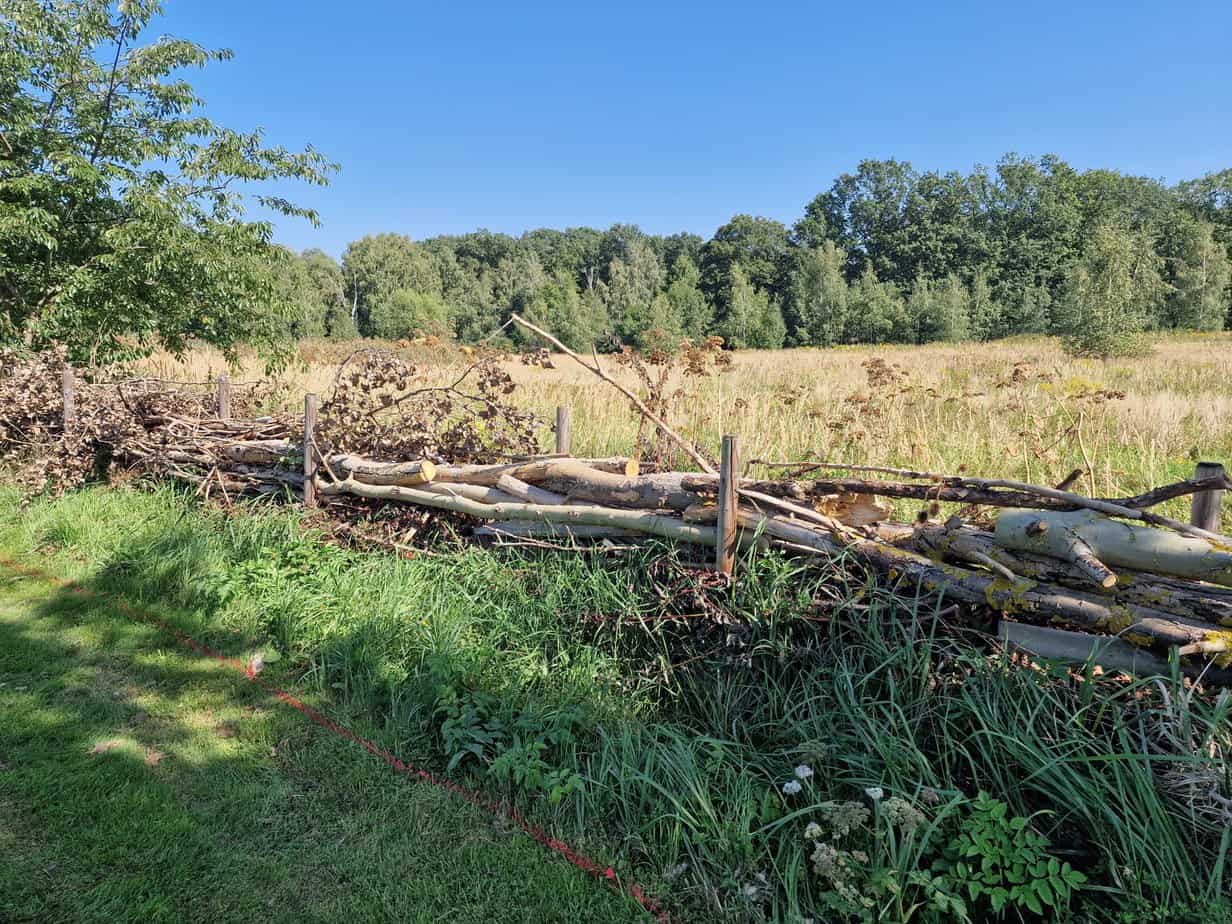The Benjes hedge: biodiversity at the edge of the fairway
The Benjes hedge: It is often seen at the edge of fairways, as a boundary to walks or other properties. More and more golf courses are creating this habitat on their golf course. The Benjes hedge is named after the conservationist Hermann Benjes. But what exactly is behind this term, and how to create a Benjes hedge?
Origin of the name benjes hedge
The name “Benjes hedge” comes from Hermann Benjes, a German environmentalist who popularized this method of planting hedges in the 1980s. Benjes discovered that piling garden waste and wood scraps in the form of long, irregular piles not only saves space, but also provides habitat for wildlife and plants. Thus was born the term “Benjes hedge”, which since then has come to stand for this type of near-natural hedge use.
Habitat for a variety of species
A Benjes hedge is not only aesthetically pleasing, but also provides a habitat for many different species of animals and plants. Insects find shelter and food in the wood and plant debris, while birds use the hedge as a nesting site. The hedge also serves as protection from wind and weather and promotes biodiversity on the golf course.
Materials for the construction of a Benjes hedge
The materials for the construction of a Benjes hedge are easy to obtain and readily available on all golf courses. They need branches, twigs, woody debris, and leaves that accumulate throughout the year anyway when areas of the fairway edges or extensive areas need trimming or storm damage has occurred. Chemical-free these materials are on the golf course anyway. Thus, the Benjes hedge is also a comparatively inexpensive matter, but you need plenty of working time, which often does not remain for the greenkeepers. Therefore, benje hedges are often created by volunteers at a club or by the greenkeeping team outside of the peak season times
Step by step instructions on how to build a Benjes hedge
Site selection: Choose a sunny to semi-shady location.
Preparation of the ground: remove grass and weeds in the planned place, so that the hedge can grow better.
Layering: Start with a layer of coarse branches and twigs, about 50 cm high. This will form the basis of your Benjes hedge.
Intermediate layer: fill the centre with smaller branches, twigs and foliage to stabilize the structure and provide habitat for small animals.
Finish: cover the hedge with a thin layer of soil to prevent the growth of wild weeds.
Care: In order for the plants to develop well, some watering is necessary to start. In general, however, the Benjes hedge continues to develop well even with the normal rainfall.
Long-term care and maintenance
A Benjes hedge requires little maintenance over the years. Occasional pruning is advisable to keep the hedge compact and give it a neat growth. However, this pruning should be done in late winter or early spring to avoid disturbing nesting birds.
Over time, the Benjes hedge becomes an ecological paradise where insects, birds and other animals feel at home. It thus makes an important contribution to nature conservation and the promotion of biodiversity. It is also positively perceived by golfers as a conservation element without interfering with the flow of play.
Do not forget communication
Don’t forget to communicate the purpose of the Benjes hedge so that both guests and members of the course also see the added value of this habitat. The Benje hedge thus becomes one of many examples of how a new habitat for plants and animals can be developed relatively easily on the golf course.








